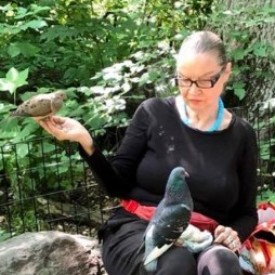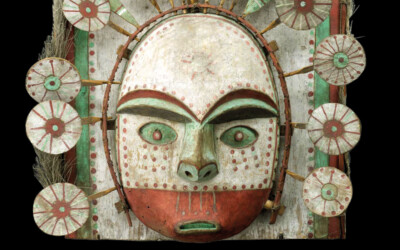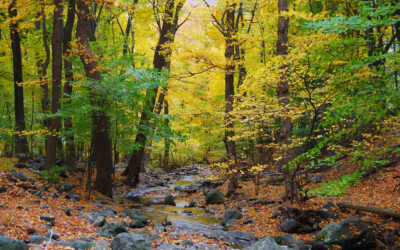
The subject of appropriation by “whites” of Indigenous spiritual and shamanic healing traditions and practices is a serious one, fraught with many unmarked pathways and crossroads that raise deep political issues, with many historical implications. There are at least three ways (and a combination) in which I have seen Indigenous people themselves deal with the matter. First of all, although the word “shamanism” has become a generic word used to denote “a practice that involves a practitioner reaching altered states of consciousness in order to perceive and interact with a spirit world and channel these transcendental energies into the world,” which can be benevolent or malevolent1, among North American Indigenous people the word, more often than not, is anathema. (The word “shamanism” originally pertained to a practice by a Tungusic tribe in Siberia.) Instead, First Nations people use “medicine” man or woman to denote a person who does traditional North American healing.
In the most prevalent way of dealing with appropriation by the First Nations people— American Indians (as in American Indian Movement, AIM) in North America—the Indigenous people react to the ongoing legacy of colonization by Europeans, or Westerners. From their perspective, the non-natives, and even some natives, often spend a short time learning about a tradition or ceremony, in one or a few workshops, and then call themselves “shamans” or “medicine men or women,” when the traditional natives are required to spend years as apprentices learning the practices. These non-natives then often proceed to commercialize a practice regarded as sacred (without the appropriate permission), and charge for their services and for teaching.
Many of the First Nations people feel that the only thing left to them that “whites” haven’t appropriated are their spiritual traditions, which, by the way, they were forbidden by law to practice in the U.S. until 1978. As a result of this, the radicals among this group of First Peoples object vehemently to the use by “whites” of any of their Indigenous spiritual and healing practices. Over the years since AIM was founded in the early 1970s, it has not been unusual for some of the younger members of AIM to turn up at such non-Indigenous events, such as sweat lodges, and force them physically to stop. More usual are the menacing phone calls and other such messages on Facebook and other social media, used to harass the perceived perpetrators, which includes non-enrolled First Nations people themselves, as well as Indigenous people teaching whites.
The fact is that many of us “Westerners” have ourselves come up against the spiritual futility and dead end that has been the result of Enlightenment and Industrial Age thinking associated with the devastating Western colonization (where the Indigenous peoples lost their lands and way of life) and its push to “explore” the planet and to “discover” lands unknown to Europeans. Beginning in the 15th century, Europeans fantasized that the Americas were an undiscovered “New World,” rich with unlimited natural resources and fertile lands for the grabbing, populated only by “savages” who needed to be converted to the white man’s religion—“Christianity”—by coercion if necessary, for their own good, or destroyed if that failed. This was the beginning of some 500 years of different forms of genocide against the natives, which is continuing today, invisible to most whites but very much affecting the Indigenous people themselves. In the U.S. alone, many of the more-than 370 ratified treaties with the American Indians continue to be broken on a daily basis, with the government and corporations continuing to expropriate lands from reservations, often for the exploitation of the mineral and oil resources, destroying the water tables, and with little or no compensation for the Indigenous inhabitants. (Note the ongoing standoff at Standing Rock between the First Nations and the Dakota pipeline.) And, reminiscent of the 20th century program where Indigenous children were routinely taken away from their homes to mostly Christian boarding schools where they were forbidden even to speak their own languages—purportedly, to take the Indian out of them and give them white man values instead—children today are routinely taken to foster families far from the reservations rather than allowing them to be kept in programs on the reservations themselves, thereby continuing to deprive them of their heritage. And since it was only in 1978 that American Indians were allowed to practice their spiritual traditions such as potlatch, sweat lodges, and Sun Dances in the U.S., the Indigenous people who did manage to survive and retain some modicum of their heritage, did so by going underground or due to some form of accommodation with “Christianity,” or both.
In addition to the above, something that is generally known in native circles, but not by the rest of the population, is that ownership of land in the U.S. continues to rest on the 15th century papal encyclical of the Doctrine of Discovery, which awarded all lands in the Americas and elsewhere on the globe to “Christian” conquistadors and settlers. As recently as 2005, the U.S. Supreme Court upheld this principle in a case involving Oneida lands. And so, there continues to be a great deal of resentment by the original peoples of this encroachment by mostly-whites. (I wonder if they would be so protective of the traditions if they had never been made illegal.) From their viewpoint, must they lose their spiritual traditions also—to non-Indigenous who often will alter them and market them for profit? Must they lose them to us “whites” in our need to reconnect with a spiritual dimension that our society as a whole is continuing to lose touch with? This is taking place very rapidly now with the all-pervasive wireless technology that works to further separate us from Mother Nature and Spirit and from our inner spiritual world, which is being imposed on the whole of society? On this subject, Daniel R. Wildcat (Yuchi/Muskogee), director of the Haskell Environmental Research Studies Center, notes that, “We have created a global satellite-driven digital media world… that quite literally isolates us from the natural environment.”2 Those of us in the shamanic community need to be concerned about this, for shamanic practice depends ultimately on having a strong a connection with Nature.
The great hitch is often that, good as our intentions may be, as Westerners coming from a consumer and marketing society, we unwittingly treat these sacred practices, carefully guarded by Indigenous elders, sometimes for centuries (out of reach of the authorities), as practices to be “discovered” and “appropriated” then “marketed” as “consumer products” to others searching for meaning in an increasingly, spiritually-barren, Western-dominated world.
Another thing is that we have failed to take into account that American Indian practices derive their meaning and power from specific places; their practices are tied to the land and the communities themselves, and are not meant to be universal and transferred to generic “medicine ways” and “shamanism” workshops. We can, however, as Michael Harner correctly understood when he created “core shamanism,” identify some of the underlying principles of these Indigenous practices, and extract them; they often do work as such. But we cannot fault the North American Indigenous peoples for seeing our appropriations of their sacred practices, guarded at great human cost, as a bastardization of all that they hold sacred, while at the same time they see that we continue to enable, by our very lifestyles, that same capitalist/ consumer/marketing society that is continuing to destroy their own traditional societies along with Mother Nature herself. By this I mean: our participation in a fossil-fuel based economy, including our tolerance for—and often dependence on—water in plastic bottles, that we actually pay for; our tolerance for Monsanto’s genetically modified foods (GMOs) and glyphosate (Roundup) as a pesticide, and harmful synthetic pharmaceuticals; along with the all-encompassing wireless technology, that is best embodied by the ubiquitous computers and cell phones, that are causing the massive deaths of insects that are an important part of the food chain (such as for birds, and which interfere with birds’ flight patterns), as well as our nutritional health, in general; and are altering the earth’s electro-magnetic field; and so on.
Yes, many of us try to avoid such, and we protest their use in various ways, but the truth is that wireless and all that goes with it is winning the battle, even creating a dependence among natives themselves. (Virtually all of the traditional natives, worldwide, have succumbed to computer and cell phone use.) And so, our Western way of life itself is enabling the further destruction of what is left of Nature on the planet Earth just as, at the same time, we seek out the spiritual practices that depend on a deep connection and communion with Mother Earth. (We often end up talking about connecting with nature in workshops, and then journeying in a guided meditation to an imaginary place in Nature, and looking at pictures of Nature on the Internet, or specimens in zoos, aquariums, and botanical gardens, instead of connecting in a deep way, which can take hours every day over a period of many years to do successfully.)
 For example, in New York City’s Central Park, considered one of the ten primary places in the U.S. for bird watchers, the Central Park Conservancy, charged with its wellbeing, in a recent fundraising letter spoke of the enjoyment of the plantings, trees, lakes, etc., never once mentioning the wildlife in its care, and regularly uses Monsanto’s glyphosate as a pesticide.
For example, in New York City’s Central Park, considered one of the ten primary places in the U.S. for bird watchers, the Central Park Conservancy, charged with its wellbeing, in a recent fundraising letter spoke of the enjoyment of the plantings, trees, lakes, etc., never once mentioning the wildlife in its care, and regularly uses Monsanto’s glyphosate as a pesticide.
Moreover, the Conservancy often allows the Geese Police to frighten the resident Canada geese (some twenty or thirty of them) with dogs in kayaks and loud noises, seeking to chase them away from their home. It has done so, knowing that the geese would fly to nearby parks and the Jamaica Bay Wildlife Refuge, where, during the molting season, when geese cannot fly, they have been routinely rounded up by the USDA Wildlife Services in boxes and taken away to be gassed. The Conservancy also promotes recreational fishing in the lakes and ponds in the park, where people fish the same fishes over and over, damaging their gills and exposing them to the air for long periods while pictures are taken—nothing less than a form of torture for the fishes. At the same time, more and more trees are being cut and not replaced, and more paved pathways are being created in a section called the Ramble, originally meant to resemble wild territory, to accommodate a growing influx of tourists, with little regard for the birds, fishes, turtles, raccoons, squirrels, butterflies, dragonflies, etc., that live there. And, in fact, there are fewer and fewer birds, including the migratory birds that bird watchers come from all over to see in the spring and fall. In fact, the problem is so prevalent that the Conservancy has had to create a special map of Central Park for electro-sensitive persons, showing where the areas with the highest density of radio waves emitted by cell phone towers are located. This is just one example of our Western society’s systemic failure to respect nature and its beings, of which there are many more across the country, all being duly noted by the traditional First Peoples.
In this vein, somehow, it seems terribly wrong that those Indigenous (as well as others of us) who want to maintain a way of life less alienated from nature, are more and more being excluded, without any say, from the wireless-digital-economic system that is emerging in draconian fashion (due to the rapidity of change). This means that older people, especially—the elders, with their wisdom—are being systematically disenfranchised and often left without a means of making a living. In the past, non-smokers often had this problem. If someone happened to be sensitive to secondary smoke (the equivalent of today’s radiation from electronic devices), she would not be able to work in most offices or go to most coffee shops and restaurants, and other places, and would therefore find it very hard to make a living.
And so, from a traditional Indigenous point of view, there is little incentive to want to share the carefully-guarded traditions and sacred spiritual practices, including healing with herbs and the invisible spirit world, with young whites desperate for meaning, and eager to share with missionary zeal what they might have learned in a short period of time. When Westerners learn something new that appears to work, indeed, our impulse is often to want to put it out there in watered-down, or popular, form, and market it, irrespective of the fact that it took the traditionals many years of apprenticeship and learning to be able to do what they do. (Such use of the sweat lodge has actually resulted in several deaths.) Tragically, most of the younger First Nations people are more interested in joining the white paradigm than in their own traditions. Therefore, although some traditionals have opted for teaching whites so as to keep them from dying out, many, many of them have opted to die without passing them on.
Often the recipients of medicine ways are assimilated into the wider New Age movement, where they are used in a “mix and match” fashion, the more colorful parts, such as feathers and medicine wheels and sweat lodges and such, combined in superficial practices with, for example, angel cards, so-called “goddess” rituals, and DNA strand renewals, thereby losing the whole notion of connection to the land and its spirits. Yes, although these practices often do have results, overall, they are far shallower than the original, and are often passed on in workshops, becoming even more diluted. I recently listened to a one-hour webinar by a well-known “white” shaman, where we were “initiated” into a specific “shamanic” animal “medicine” way through a guided meditation, and were told that that particular animal was now our “spirit ally.” The host proceeded to talk about the depth of the initiation we had received and how we had not had to leave our couches and travel to the place where the tradition was practiced, as if that were a plus.
The second way that Indigenous people have responded to appropriation is where traditional medicine carriers opted to teach white people their traditions once they became legal, seeing that their young people were not interested, which was taken up largely by the Lakota. This was probably inspired by the 1932 book Black Elk Speaks. Although Black Elk did not teach his traditions to whites, he revealed many of them to the author of the book, John G. Neihardt, and it has become a classic. Black Elk’s nephew, Medicine Man and Pine Ridge Ceremonial Chief Frank Fools Crow, proceeded to do the same in the books Fools Crow and Wisdom and Power, where he conveyed many of his practices and knowledge to the author, Thomas E. Mails. He once said, “The ones who complain and talk the most about giving away medicine secrets are always those who know the least.” And Fools Crow proceeded to authorize at least one white man to conduct the Sun Dance. However, he did so only after ascertaining that the man in question had spent a great deal of time learning the tradition and was a proficient intercessor. Fools Crow didn’t just say that anyone could take a piece of the teachings and declare him or herself a medicine man or woman in the Lakota tradition. My own Sun Dance intercessor, Lakota Durwin WhiteLightning, who invited me to participate in his last Sun Dance before he was killed, was known for inviting whites to dance, and having white helpers. But he only entrusted sweat lodges, pipe smoking and leading the dance to whites after a long apprenticeship.
And there is also a third way of looking at this matter of appropriation from an Indigenous perspective. I recently attended (Western style, I acknowledge) a workshop on Andean sound healing with Kichwa healer and spiritual leader Don Oscar Santillán Kuricharik, from the Otavalo region in Ecuador. Don Oscar’s method of teaching, however, was different from most of our Western-style workshops. He didn’t tell us that we would be able to accomplish a list of things by the end of the day, or teach us specific songs or melodies, or how to make an altar or a despacho offering, or do a ceremony, or what to do in our spiritual practices, but rather filled our hearts with wisdom that we could apply to our own practices, all based on connection or “communion,” as he called it, with the family of Nature. He also explained that he and his colleagues did not use the word “shaman” for themselves because it had been appropriated by certain South American Indigenous who were working with the dark forces, and had given it a bad name.
Don Oscar’s focus was on teaching us how, not what, to do. He instructed us to find what was right for us. When he described his practice of going to a spring to bathe in very cold water at dawn, he qualified it by saying something like, “Don’t you do this. This is my practice. You need to find your own practices, that are right for you.” He talked about the basic underlying principles of his method of sound healing, and made every effort to impart knowledge to us that was the fruit of his wisdom. He placed great emphasis on approaching the work with great respect and humility, and making the proper offerings, which could be anything from a simple sound to an elaborate three-week-long ceremony involving fasting and purification (such as for their spring plantings). He stressed that it is necessary to always offer something first when seeking information or assistance from a wild being or plant or tree or mineral, or the elements or spirit deities. Above all, he stressed the importance of being in alignment with Mother Nature and her creatures, as well as those bodies in the cosmos—the sun and moon, the stars and galaxies—for that was all of what we ultimately depended on. He talked about finding what he called in Kichwa, ushay, which I understood to mean something like the primordial essence of a person, thing, place or state, when working, and connecting with it. He stressed the importance of being in constant communion with all of Nature and the Cosmos as the source of spiritual power for healing and balance, and the importance of good food for the physical body. It was even important to enjoy defecating, he added, as that was an example of a sacred practice: nature purifying and renewing our bodies.
Don Oscar spoke of how, still today in the Andes, you find communities of people who, although they live in extreme material poverty and often don’t have enough to eat, live in the joy of life because of their relationship to Mother Nature and the Cosmos. He spoke of the importance for the Kichwa historically of having a traditional garden, or chacra, where they grew foods that were a family of corn, beans, squash, etc., that lived together in harmony, and where there had been no use of artificial pesticides and fertilizers over the centuries preceding modern times, where communion was sought with the seeds, at the time of planting and later at harvest time.
It’s your connection with Nature, he taught, that will allow you to have results in your healing practices. In the case of sound healing, through sounds, it is the intention that gives the sound its power. Otherwise, a sound is just a sound. Water is just water. A rock is just a rock, until you place in it your intention. That is what makes it a tool, not just a rock. And so, he noted, the rock on his altar, which he might have used successfully for years as an instrument, would be just a rock for someone else. And intention, he explained, was linked to communion.
And so, we went away inspired and with a good dose of Indigenous wisdom, but with no specific knowledge of how to replicate the traditional Kichwa ways that Don Oscar himself practiced. The sound instruments he shared with us and played were also for his use alone, displayed before him on the ground, on his altar. Nor did he show us how to play any of them. He played a clay ocarina whistle, jade and bamboo panpipes, panpipes made of different size condor feathers, and a flute made of a magnificent single condor feather. (The feather instruments, he explained, in his tradition, were only carried by spiritual leaders.) And he also sounded two aluminum tuning forks, which he tapped first on his knee, then on his rocks. He did this, he explained, because he had encountered similar ancestral instruments in the museums, made of stone, which he understood had been used in similar fashion.
Of course, upon seeing a magnificent condor-feather flute, which I had never seen, the Westerner in me immediately wanted one, and I mused about how I could make one myself, with perforations in the shaft of a large feather. And I thought how someone in the Western, capitalist-consumer way might want to make a quantity of them, to offer for sale. I thought how someone would probably succumb to the temptation to do just that, without giving it a second thought. The question, of course, is whether this would be an honest appropriation. Of course not, I concluded, after my brief lapse into being a Westerner. No doubt the existence of these condor feather instruments had been kept secret earlier by the elders in order to avoid just such a violation of Indigenous sensibilities.
Nevertheless, I realized that Don Oscar had, to some degree, solved the problem of how to pass on the traditions without violating the taboos. When I asked him how he felt about teaching his traditions to “whites,” he responded emphatically, “Excellent!” And he went on to explain that when his own people see that the traditional practices are valued by “whites,” it causes them, especially the young, to want to learn them also, making his job that much easier at the Centro Pakarinka Sisari he has created, to promote the recovery of Kichwa traditions among his people.
NOTES
1 Anthropologist Mihaly Hoppal, in Wikipedia: “Shamanism.”
2 Wildcat, Daniel E.: Red Alert! Saving the Planet with Indigenous Knowledge: Golden, CO: Fulcrum 2009, p. 10.
BACKGROUND BIBILIOGRAPHY:
Deloria, Vine, Jr.: God Is Red: A Native View of Religion, Golden, CO: Fulcrum 2003;
The World We Used to Live In: Remembering the Powers of the Medicine
Men, Golden, CO: Fulcrum 2006.
Newcomb,Steven T.: Pagans in the Promised Land: Decoding the Doctrine of Christian Discovery, Golden, CO: Fulcrum 2008.
Renfrew, Nita M.: “Traditional American Indian Bodywork, the Origin of Osteopathy, Polarity, and Craniosacral Therapy” A Journal of Contemporary Shamanism, Vol. 8, #1, Spring-Summer 2015; reprinted in John Beaulieu: Polarity Therapy Workbook, 2016 edition.
Singer, Katie: Electronic Silent Spring: Portal Books 20014.









0 Comments